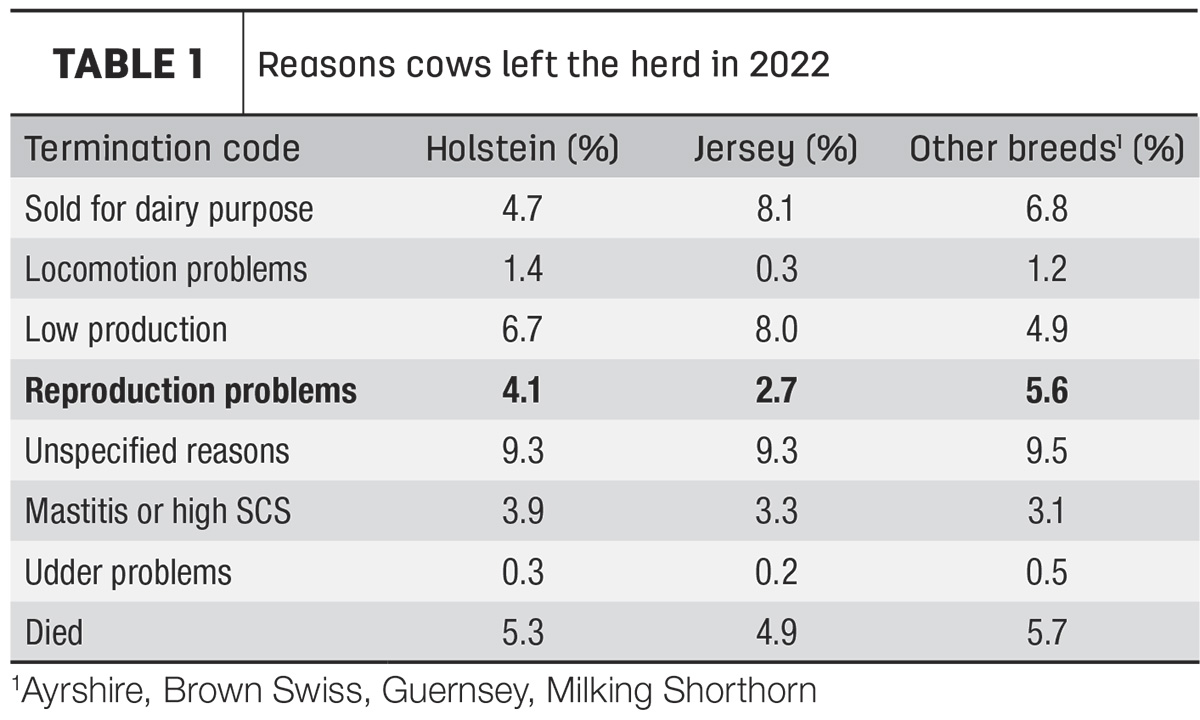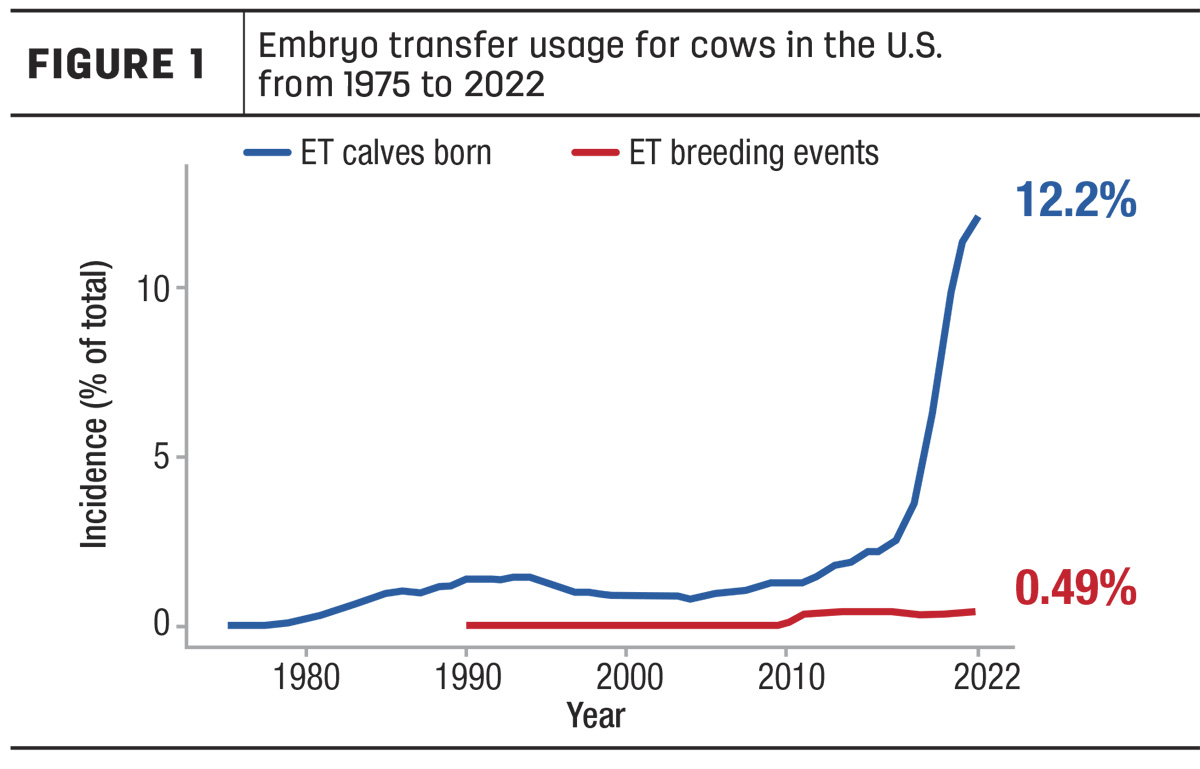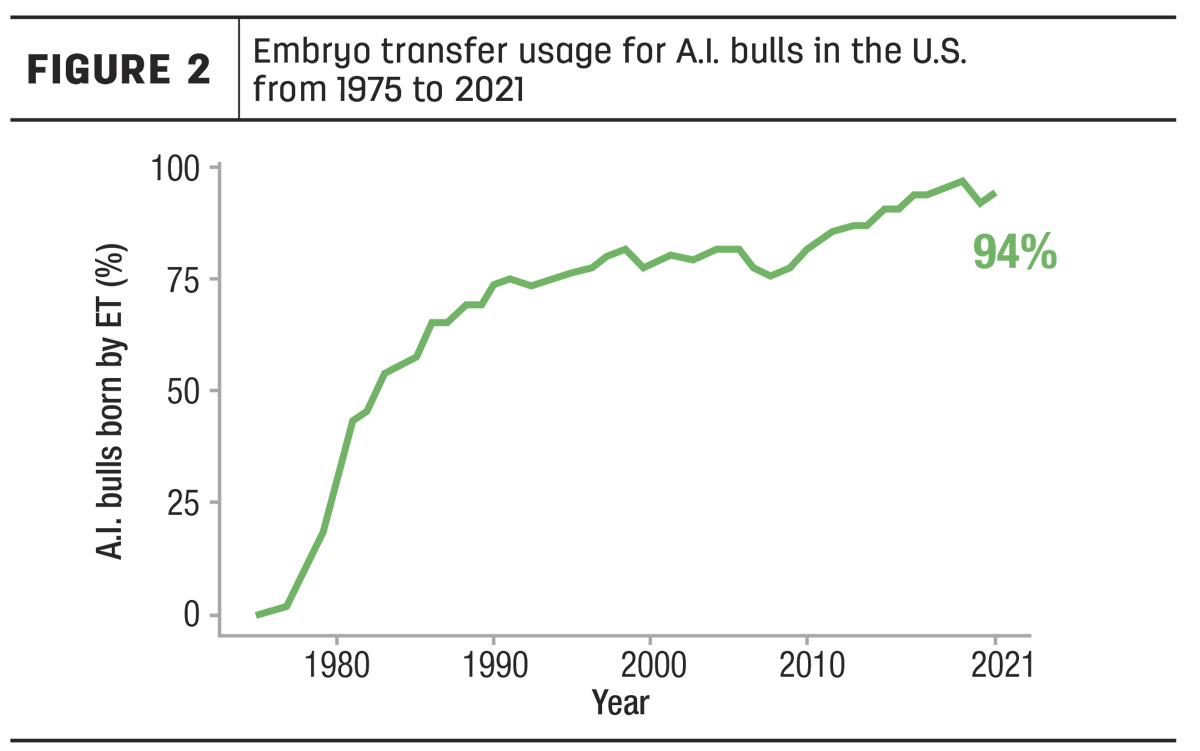Of the many reasons a cow may leave the milking herd, culling for reproductive problems is one of the most common (Table 1). The Council on Dairy Cattle Breeding (CDCB) provides fertility evaluations, like Sire Conception Rate and Daughter Pregnancy Rate, to help guide farm breeding programs.
Reproductive technologies have advanced significantly since these evaluations were developed. Commercial embryo transfer (ET) is one technology making waves in reproductive management and how we evaluate fertility. Part of the attraction of embryo transfer is in substantially reduced generation intervals, which accelerates genetic progress.
Embryos purchased in volume could cost as little as $100 per embryo, which puts embryo transfer at a competitive price level, especially when the increased rate of genetic progress is considered in addition to successful pregnancy.

Accurate fertility evaluations rely on matching breeding events entered into farm management software with a confirmed pregnancy and resulting calf. Unfortunately, embryo transfer breeding event reporting is not matching its popularity. In 2022, 12% of total calves born were reportedly by embryo transfer, but only 0.5% of the total breeding events used in fertility evaluations reflected embryo donation or implantation events (Figure 1). The problem is that with embryo transfer there is no conception event; pregnancy occurs with the implantation of a high-quality embryo. The U.S. already excludes all known embryo transfer donors and recipients in conception rate evaluations, but that strategy does not work in cases where embryo transfer breeding events do not reach the National Cooperator Database at all.

Researchers at CDCB and AGIL were initially concerned that embryo transfer calves were being incorrectly coded as resulting from artificial insemination (A.I.), accounting for the large discrepancy in embryo transfer calves born and embryo transfer breeding events reported. This could happen if a cow was inseminated, heat was later detected, and then she received an embryo, but the only breeding record to reach CDCB was of the A.I. event and not the embryo implantation. A subsequent pregnancy exam could mistakenly confirm the A.I. service to be a success instead of the unreported embryo transfer. Fortunately, this is not the case. We tested this theory by matching reported breeding event types with birth types recorded about nine months later when the calf is born, and 97% of the embryo transfer calves have no associated breeding event at all. This suggests that embryo transfer donation and implantation events are not being obtained from most herds.
Since April 2022, the models for calculating evaluations for Sire, Cow and Heifer Conception Rate have been modified to remove years that herds report over 10% of their calves born by embryo transfer but transmit less than half of the expected number of embryo transfer breeding events. The effects of this edit were overall small, with the biggest changes in conception rate PTAs observed for young bulls with high Lifetime Net Merit$ and popular for embryo transfer usage. This makes sense, as young bulls with fewer daughter records would be more responsive to potential biases introduced by unreported embryo transfer and the omission of those records in their calculation. A complete analysis of this edit and its effects has been published in the Journal of Dairy Science, July 2023.
Several years ago, CDCB distributed resources on correct embryo transfer entry into the most common on-farm software platforms. Correct recording at the farm level is the first step toward improving data flow; the next challenge is standardizing the exchange of embryo transfer codes from on-farm software to Dairy Records Processing Centers. This will require the cooperation of software providers to modify their programs for the long-term storage and transfer of embryo transfer data. Work in this area is ongoing.
Completely removing embryo transfer animals from the evaluation system is not the best approach, because embryo transfer animals often represent the most elite animals and make up an increasingly larger proportion of the U.S. dairy population. From a research perspective, this can only be improved with better flow of high-quality data related to embryo transfer and reproductive management.
Over five times as many calves were born by embryo transfer in 2022 compared to just five years earlier in 2017, and this increase may continue similarly to what we have seen with dairy bulls. As of 2021, 94% of all A.I. bulls were born by embryo transfer (Figure 2). Embryo transfer for cows may continue to increase as it has for A.I. bulls, in which case comprehensive, high-quality reproductive records will become even more critical for producing useful reproductive management tools like fertility evaluations.







